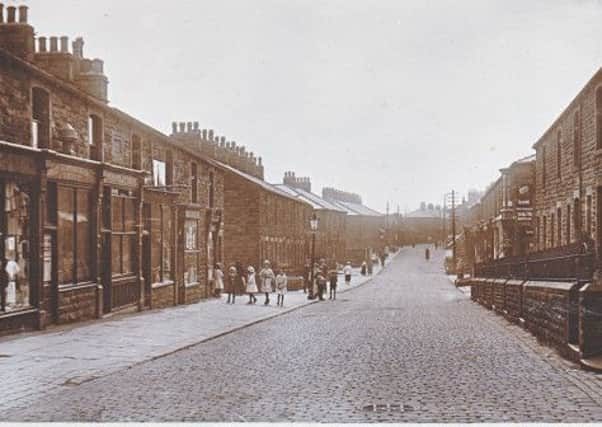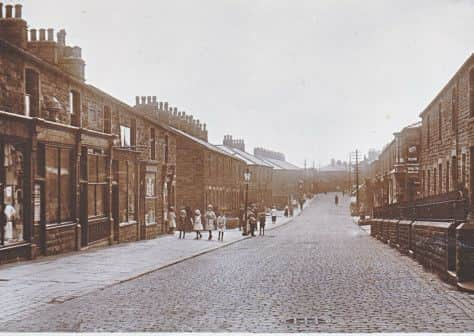Villages which helped boost economy


In addition, all three boroughs have a number of villages, or parished areas, but, in Burnley, until relatively recently (and largely because of the dominance of Burnley) the smaller communities were largely forgotten.
There were, of course, reasons for this, the main one being that Burnley had such considerable problems with its failing economy and its population collapse that the council took its “eye off the ball”, so to speak, so far as its more rural areas were concerned.
Advertisement
Hide AdAdvertisement
Hide AdIt seems that, at the moment, Burnley is on the up. I do not like to introduce politics into this column but the success we are having at the moment is not the result of the perceived wisdom of one particular political party. It is because of the combined effort, not only of political parties, but local businesses and the wider community working in partnerships to support each other.


There are other factors, of course, like the involvement of the Prince of Wales and his charities. Similarly, it should not be forgotten that Burnley has been fortunate to recruit some excellent council officers, at all levels, who have addressed regeneration problems both creatively and with vigour to get the results, like “Most Enterprising Area in the UK Award”, we are enjoying at the moment.
Of course, a lot of the regeneration is taking place in Burnley which, at one time, was heading towards Detroit-like standards of commercial and municipal failure. We can now see huge improvements taking place on the ground and soon it is hoped regeneration will develop its own impetus. Again it is hoped the disparities which have existed between our urban and rural communities can be dispelled.
If we turn our attention to the more rural parts of the borough what have we got? Collectively, the out-of-townships, as they were once called, are a tremendous asset to the borough. They not only contain some considerable heritage assets and some lovely countryside (sadly at risk, perhaps, from a number of wind farm developments) but also a number of rural businesses.
Advertisement
Hide AdAdvertisement
Hide AdIt is important for the wellbeing of all our citizens that we have the green space of the rural parts of the borough in which to enjoy ourselves. It must be preserved but that should not mean stagnation.
In addition, the villages of Briercliffe, Cliviger and Worsthorne make significant economic as well as heritage contributions to the present borough. This has always been the case, though gone are the days when Harle Syke, in Briercliffe, for instance, was not only a large employer of Burnley families it was also the most important of the smaller cotton weaving communities in Lancashire.
This week’s Retro is about some of the villages which are part of the Borough of Burnley, not as it is today but as they were 100 years ago. It will be found that the villages were very different but all contribute then as they continue to do at the present time.
I have already mentioned Harle Syke with its cotton heritage which is still much in evidence today but if we consider Walk Mill in Cliviger that village, also, has a significant commercial history. Its name even comes from a commercial process, the fulling of woollen cloth which was once known as “walking” because the cloth was placed in vats of water and then “walked” by people with their bare feet. Those of you who are known as Walker get your surname from this process.
Advertisement
Hide AdAdvertisement
Hide AdWalk Mill also had a large cotton weaving shed but, more importantly, it had several coal mines, one of which appears on the postcard image I have chosen for this article. There were also several other business premises; a corn mill, an ice works, an egg packing plant and a large brewery. Of course, all of these latter have now gone but the name of the village survives, a constant reminder of Walk Mill’s industrial past.
Worsthorne is another place which has a commercial past. There were three cotton mills in the village – two actually in the village itself, the other at Brownside – but this village contains the substantial remains of an even older industry, that of handloom weaving.
I have never worked out a figure for the number of surviving handloom weavers’ cottages but Worsthorne shares with Haggate, which is in Briercliffe, the distinction of remaining essentially a hand loom village. The wooden looms might have gone years ago but the places of work, where the clanking of the loom was once a common sound, are still there for all of us to see.
At Haggate, and in its near-neighbour, Lane Bottom, there are two very special buildings associated with the handloom weaving industry. I refer to Hill End House, which even locals think is in Lane Bottom, but, as its proper name is Haggate Hill End, we can see that it is the last house in Haggate rather than the first house in Lane Bottom. This property was the home of a family for generations involved in the textile industry, first in wool and then in cotton. Hill End House is one of the last of its type, a master’s house designed not only to live in but to work in as well.
Advertisement
Hide AdAdvertisement
Hide AdIn Lane Bottom I was pleased to see, quite recently, that the owners of one of the cottages in Higher Buildings (“Th’ Hicker Biggins”, to locals) had put a plaque on the wall giving the date of the property. That date is 1777